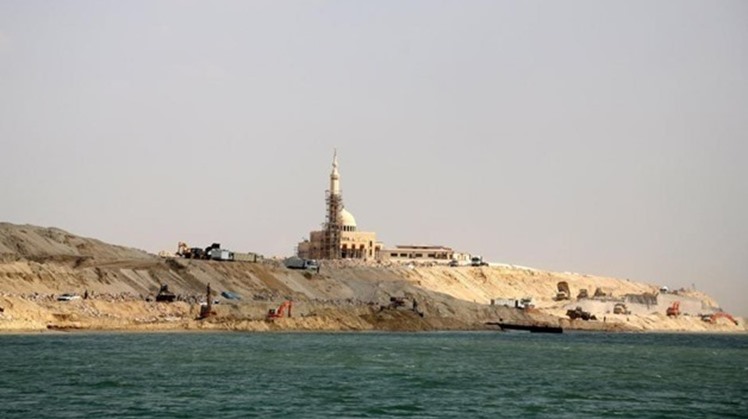CAIRO – 29 August 2021: Egypt’s 2021/2022 plan aims to increase the revenues of the Suez Canal by 5.6 percent, according to Minister of Planning and Economic Development Hala El-Said.
El-Said explained that the revenues of the Suez Canal will thus rise from LE 93.9 billion in 20-2021 to LE 99.3 billion in the year of the plan, exceeding the output achieved before the outbreak of the Corona pandemic in 18/2019.
This came in a statement by El-Said on the occasion of the announcement by the Ministry of Planning and Economic Development of the Suez Canal development strategy with the plan for the current fiscal year 21/2022, which is the fourth year of the medium-term plan for sustainable development (18/2019-21/2022).
The minister confirmed that the Suez Canal is a main artery for the global seaborne trade movement, through which about 10 percent of the total global trade movement crosses, and about 25 percent of the total movement of containerized goods globally, and 100 percent of the total seaborne container trade between Asia and Europe. In addition to being one of the most important links in global supply chains due to its distinguished geographical location as a navigation channel linking the Mediterranean Sea at Port Said and the Red Sea at Suez, and the navigational services the Canal provides for transiting ships and tankers.
She added that the canal is characterized by its high capacity to accommodate all types of ships, as it can accommodate 100 percent of the global fleet of container ships, about 93 percent of the fleet of dry bulk vessels, and about 62 percent of oil tankers and its derivatives.
El-Said pointed out that at the level of the national economy, the Suez Canal activity is one of the main sources of foreign exchange, as it currently achieves annual revenue of about $ 5.84 billion.
The report of the Ministry of Planning and Economic Development stated that to maximize the economic returns of the Suez Canal, it is intended to develop the economic zone and turn it into a high-tech industrial zone and a logistical zone to be a major center for global trade, and a supportive element for efforts to enhance the international competitiveness of the Suez Canal on the map of global shipping lanes.
The report pointed out that the comprehensive view of the development of the Canal region is based on the adoption of new development projects that would bring about an economic boom, turning the region in its surroundings into a pole of growth.
According to the report, through its warehouses, warehouses, logistic centers and factories, the loads of large tankers crossing the canal are unloaded, and light processing, packaging and manufacturing processes are introduced on them to increase their added value, and then they are recharged in smaller vehicles to centers of consumption or end use, and the region also includes factories for international companies that target Exporting its production to foreign markets, especially to the African continent.
The report pointed out that the region's development strategy is based on two main axes, the first of which is accelerating the pace of digital transformation to link all parties concerned with investing in the economic zone electronically so that licenses are issued in a unified manner through an integrated digital system, which requires the establishment of a website for each sub-region of the economic zones of the Canal Suez, and the provision of various services electronically to facilitate the work of companies and provide information about the region, its services and the privileges offered, while continuing to provide incentives and facilities to shipping companies.
The second axis is the industrial and technological settlement of specialized international companies through the packages of facilities and incentives provided by the region, including the distinguished geographical location, access to markets, customs exemptions, the advantages of the new Investment Law No. 72 of 2017, and the regulations of the economic zone represented in tax incentives and exemption from value-added tax. Moreover, 50 percent of the corporate profit tax, in addition to the new amendments to the executive regulations of the region that stimulate dealing with the local market.
 Mon, Aug. 30, 2021
Mon, Aug. 30, 2021